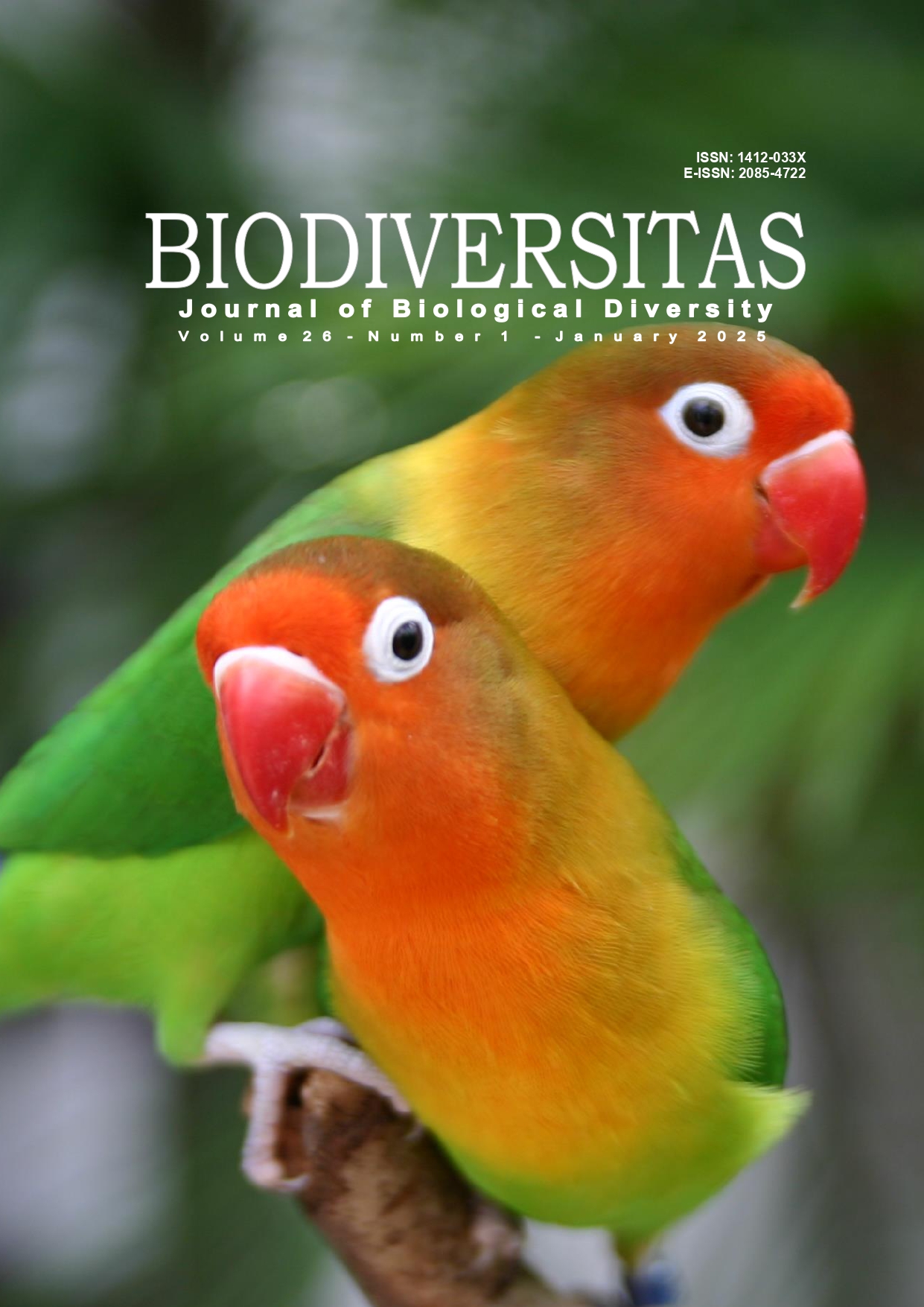The anatomy, histology, and oxidative stress level of the liver in fruit bat (Rousettus amplexicaudatus)
##plugins.themes.bootstrap3.article.main##
Abstract
Abstract. Dhamayanti Y, Suryadiningrat M, Mujiburrahman A, Firdausy LW, Maslamama ST, Purnama MTE. 2025. The anatomy, histology, and oxidative stress level of the liver in fruit bat (Rousettus amplexicaudatus). Biodiversitas 26: 102-110. Among the wildlife species known for propagating zoonoses is the fruit bat (Rousettus amplexicaudatus). It is known that the liver organ serves as a detoxifying center in the only flying mammal. An examination of the liver's anatomy, histology, and oxidative stress level was essential to bridge the gap between earlier research and take into account the liver's critical function in bats. Seven bats—four males and three females—were enlisted to examine the liver's gross anatomy, histology, levels of glutathione peroxidase (GPx), superoxide dismutase (SOD), malondialdehyde (MDA), and catalase (CAT). The study's findings, which highlight the unique aspects of bat liver anatomy and the absence of gender differences in enzyme levels, have significant implications for our understanding of zoonotic diseases. As a result, the liver is covered by connective tissue, which also separates the liver parenchyma into three lobes: the cranial, middle, and caudal lobes. The liver of a bat lacked an additional lobe, in contrast to most mammals. According to histology, the liver lobule's hepatocytes are grouped radially from the center and terminate in the central vein. The portal vein, bile ductules, and hepatic artery branches were all visible in the triad. Furthermore, this study found no significant differences (p<0.05) between male and female bats in terms of MDA (p = 0.463), SOD (p = 0.686), GPx (p = 0.455), and CAT (p = 0.443). As a reference for typical circumstances, this study concluded the anatomy, histology, and antioxidant enzymes of fruit bats' livers. Furthermore, fruit bats with normal liver conditions might be compared to the antioxidant enzyme profiles we reported.

